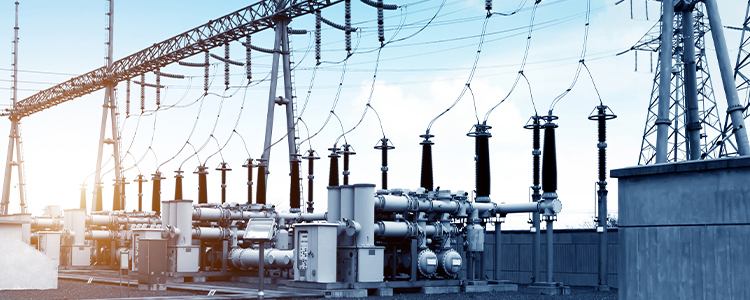- All
- Product Name
- Product Keyword
- Product Model
- Product Summary
- Product Description
- Multi Field Search


Views: 0 Author: Site Editor Publish Time: 2024-11-16 Origin: Site

1. Core
The core is a key component of the transformer, forming its magnetic circuit and serving as a mechanical framework to support the windings. It is usually made of laminated silicon steel sheets that contain a certain amount of silicon, offering high magnetic permeability and low iron loss. This helps effectively reduce eddy current and hysteresis losses, thereby improving transformer efficiency. The core structure includes the core column, yoke, and clamping device. A well-designed core and compact structure ensure efficient magnetic flux transfer, enhance operational efficiency, and reduce noise and vibration during operation.
2. Windings
The windings form the electrical circuit of the transformer, typically made by winding insulated copper or aluminum wires. Acting as the current carrier, windings produce magnetic flux and generate an induced electromotive force between the primary and secondary windings to achieve voltage conversion. The structure design, material selection, and insulation treatment of the windings directly affect the transformer's performance and service life.
3. Accessories
The transformer's accessories include an oil conservator, tap changer, safety vent, and bushings. These components primarily ensure the safe and reliable operation of the transformer and facilitate maintenance. For example, the oil conservator stores transformer oil and isolates it from air; The tap changer is used for voltage adjustment; The safety vent releases pressure in case of overpressure; And the bushings provide insulation between the lead wires and the oil tank.
4. Oil Tank
The oil tank serves as the outer casing of the oil-immersed transformer, housing the transformer oil and protecting the internal components. It also functions as a heat dissipator. The transformer oil within the tank not only cools but also provides good insulation, preventing electrical discharge and extending the transformer's lifespan.
5. Oil Conservator
The oil conservator is installed above the oil tank to isolate the tank's interior from the external air, preventing oxidation of the transformer oil. It is typically designed as a horizontally rotating cylinder, with a volume that is generally 10%–30% of the total oil volume. Inside, it maintains half oil and half gas, providing a buffer space for oil expansion due to heat. An oil level gauge on the side monitors oil level changes. The conservator and tank are also equipped with a dehydrator and oil drain valve to prevent moisture and allow regular oil sampling for quality inspection.
6. Pressure Release Valve
The pressure release valve, mounted on the top cover of the oil tank, is a protective device typically shaped as a long cylindrical steel tube, sealed at the top and connected to the tank at the bottom. In case of a fault that causes gas to accumulate and pressure to rise within the transformer, the pressure release valve opens to safely discharge gas and oil, preventing tank rupture. In recent years, domestic transformers have widely adopted pressure release valves over traditional rupture diaphragms. These valves offer greater precision, faster response times, and automatic opening and closing, which eliminates the need for power shutdowns to replace diaphragms.
7. Gas Relay
The gas relay, also known as the Buchholz relay or float relay, is an essential protection device, usually installed on the connecting pipe between the oil tank and the oil conservator. Its main protection functions include: triggering an alarm when gases generated by internal faults accumulate to a certain level, automatically cutting off the circuit if oil level drops rapidly due to severe leakage, and quickly cutting off the circuit if a fault causes an oil flow surge towards the conservator, preventing the fault from escalating.
8. Tap Changer
The tap changer adjusts the secondary voltage of the transformer. It usually has three or five taps at the end of each high-voltage coil phase, allowing selection of different taps through the tap changer to change the number of winding turns and adjust the voltage. Tap changers are divided into on-load tap changers and off-load tap changers. The on-load tap changer allows voltage adjustments without interrupting power, while the off-load tap changer requires a power shutdown. The adjustable voltage range is typically within ±5% of the rated voltage. Tap changers are installed to prevent high voltage from causing increased magnetic flux density in the core, which can lead to overheating, increased iron loss, and potentially damage equipment.
9. Bushings
Bushings are used to lead the winding terminal out of the oil tank and provide insulation from the tank. For voltages below 1kV, ceramic bushings are generally used; For 10–35kV, gas-filled or oil-filled bushings are applied; And for voltages above 110kV, capacitive bushings are used to meet insulation requirements for different voltage levels.
10. Transformer Oil
Transformer oil enhances the insulation and cooling performance of the transformer. High-quality transformer oil must have high dielectric strength, low viscosity, high flash point, and low pour point, and it should be free of impurities like acids, alkalis, dust, and water to ensure stable operation under high temperature and high pressure.
11. Temperature Measurement Device
The temperature measurement device monitors the temperature of the transformer oil to prevent overheating. Small oil-immersed transformers typically use a mercury thermometer, while larger oil-immersed transformers use a pressure thermometer. This allows real-time monitoring of oil temperature, enabling operators to understand the transformer's operating status and ensure safe operation.